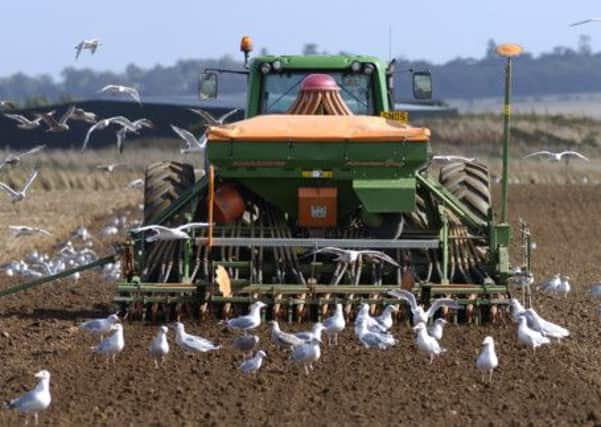‘Large tractors don’t drive efficiency’ claim


Simon Blackmore, head of engineering at Harper Adams University, said tractor design had remained the same since the Second World War, with the perception that bigger tractors were better.
Blackmore was speaking at a Farming Futures conference on agricultural technology in Coventry this week when he said larger machines did not necessarily help farmers as much as they could, and many farms had become overpowered by unnecessarily big kit.
Advertisement
Hide AdAdvertisement
Hide Ad“The current farming system is like a production line, but with the different pressures farmers face in terms of climate change, environmental regulations, Single Farm Payments and reduced inputs, we need to change things around,” he said.
“Trying to overcome the challenges we face just through yield isn’t right.
“We need to move from a production-only system to flexible manufacturing, and that involves getting new technologies to allow farmers to be more responsive than they have been.”
While machinery had become larger and larger in a bid to help farmers keep costs down, Blackmore said bigger kit actually risked creating wider problems for producers in terms of soil damage.”
Instead he said manufacturers needed to redesign machinery which was more suited to smaller UK fields as well as the country’s climate.
“Many farmers have small numbers of very large tractors, but are they really matched to the task they want to carry out? Very often, larger tractors aren’t efficient.
“We are also seeing the effects of big tractors in terms of their inability to get into a field when we want them to if it’s too wet. The problem is their weight, not their power.”
In the coming years, Blackmore said he expected to see smaller machines being introduced on to farms to work alongside larger ones, with more emphasis being placed on robotics.
Advertisement
Hide AdAdvertisement
Hide Ad“We are not far away from being able to commercialise some robots so we can start bringing them onto farms,” he said.
Phased harvesting, seeding depth to moisture, permanent planting positions and crop scouting could all be achieved by robots in future, helping farmers drive down inputs and materials.
But despite the expected increase in agricultural robot use, rural workforces should not feel threatened, he added.
“I don’t think we will see a reduction in farm workers, but we will see a shift in the skill level.
“We will have less semi-skilled labour working machines, but we will have a need for equal numbers of highly-skilled agricultural robot engineers – the next generation of farm staff.”